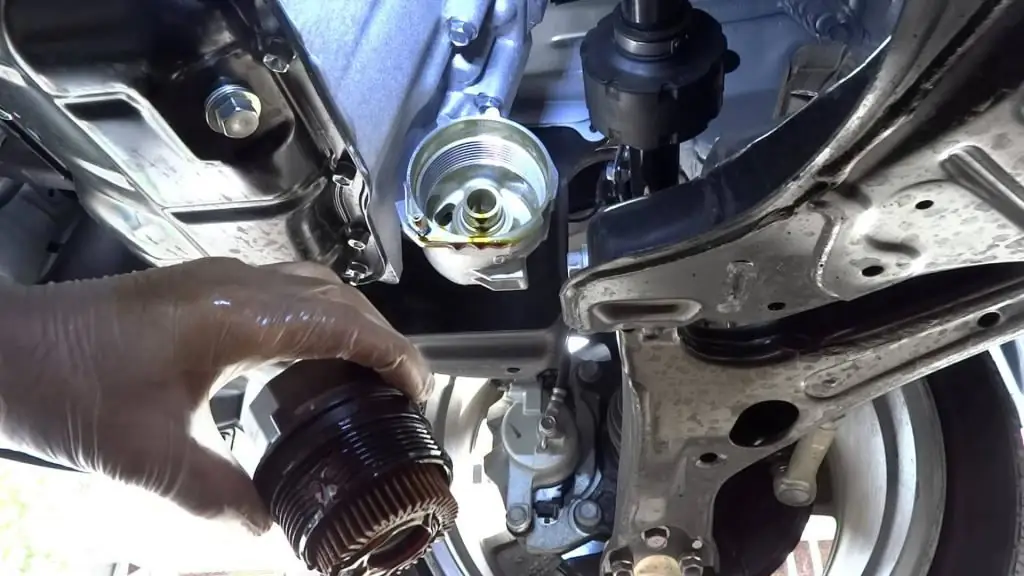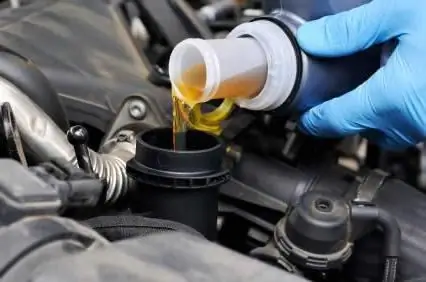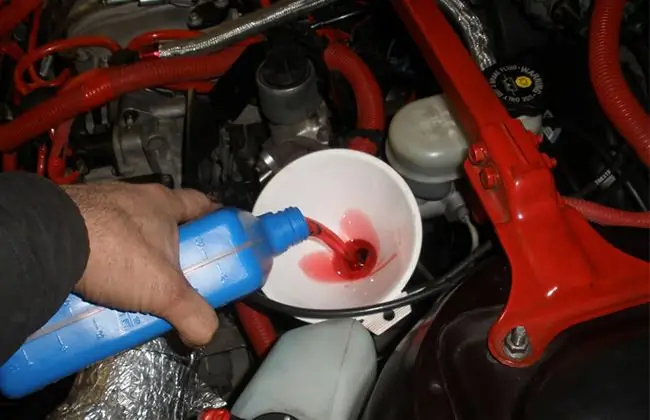2025 Author: Erin Ralphs | [email protected]. Last modified: 2025-01-22 21:14:16
Disc and drum brakes have different designs but very similar functions. On any brake in a car, you will see front brake pads. It follows that the brake system can be shoe-disc or shoe-drum. Let's analyze how they are similar and how they differ from each other.

Disk type brake system
Cooling. The pad and disc in this system are open, they are air-cooled, that is, when driving, they are blown by an oncoming air flow. In an emergency situation, when braking is performed at high speed, the disc heats up very strongly, the temperature can reach 600 ° C! For better heat dissipation, it has ventilation holes and grooves for forced air circulation.
Operating principle. The spinning disk is clamped by two pads, and the wheel slows down, stops rotational actions. The advantages of this design include the ability of the brake to clean quickly, the disadvantages: the front brake pads wear out quickly, are erased.
Causes of failure. If the brakes are often subjected to heavy loads, a small layer appears on the padssoot formed by burnt friction material. This may reduce braking performance on the road. The grooves and splines on the ventilated discs remove some of the deposits, leaving the surface clean.
Reaction to water. A sharp temperature drop destroys the disk, leading to its cracking. Damaged brakes must be replaced and must not be used. Holes, unfortunately, shorten the life of the disk, this is, in fact, a weak point in the design.

Drum type brake system
Cooling. The pad and disc are hidden under the drum. The cooling of this design is slower than that of a disk one, because the air stream does not enter the rubbing ones. To remove the resulting heat, special ribs can be seen on the drum.
Working principle. The front brake pads move apart under the influence of the brake cylinder pistons, and they, pressing against the inner surface of the drum, "wedge" the wheel.
Causes of failure. Same as disc brakes.
Reaction to water. If water gets inside, nothing bad will happen, you just need to press the pedal several times.
Symptoms of bad brake pads and solutions

Faulty front brake pads may start to whistle when braking. If you hear it while driving, then this is a signal that it is time to replace this part. Also a sign of a malfunction is a slight vibration of the steering wheel when the driver slows down. It is easy to feel and see visually. If you do not know how to change the pads on your own, contact a car service. But not only this detail of the car structure deteriorates. In the workshop, you can also be offered a service such as turning brake discs, if your car has an appropriate braking system. This procedure will return the damaged wheel part to its previous geometric evenness. The car will become more stable when maneuvering and cornering, and its handling will improve.

Be careful, watch your vehicle's braking system.
Recommended:
Oil change in Toyota: types and choice of oil, specifications, dosage, do-it-yourself oil change instructions

The reliability of your car depends on quality maintenance. To avoid additional repair costs, it is recommended to use engine oil in a timely and correct manner. The operation of any car implies a number of regulatory requirements. Toyota oil change must be carried out according to the instruction manual. It is recommended to perform the procedure after every 10,000-15,000 km of the vehicle run
Engine oil change intervals. Diesel engine oil change interval

Frequency of oil change in engines of various car brands. How to choose engine oil? Detailed instructions for changing the oil. Tips from auto mechanics
Do I need to change the oil in the automatic transmission? Description of the automatic transmission, timing and method of oil change

Automatic transmission is the second most popular. But nevertheless, this gearbox is gradually replacing the mechanics, which so far occupies a leading position. Automatic transmission has a number of advantages, the main of which is ease of use
Apparatus for changing oil in automatic transmission. Hardware oil change. How often to change the oil in the automatic transmission?

Cars with automatic transmission are no longer a rarity on our roads. A couple more years - and the automatic transmission will completely replace the mechanics. The automatic transmission is convenient to use. But so that it does not cause complaints during operation, you need to know how to properly maintain it. The key to a long resource is the timely replacement of the oil in the box. On an automatic transmission, it is done by a partial method or by a hardware replacement method
How to change the front pads "Polo Sedan"

The brake mechanism of the front wheel of the Volkswagen Polo Sedan is actuated by the movement of the piston of the working cylinder, which presses the brake pads against the brake disc. In principle, it has a classic design that is no different from the brake mechanisms of other cars

